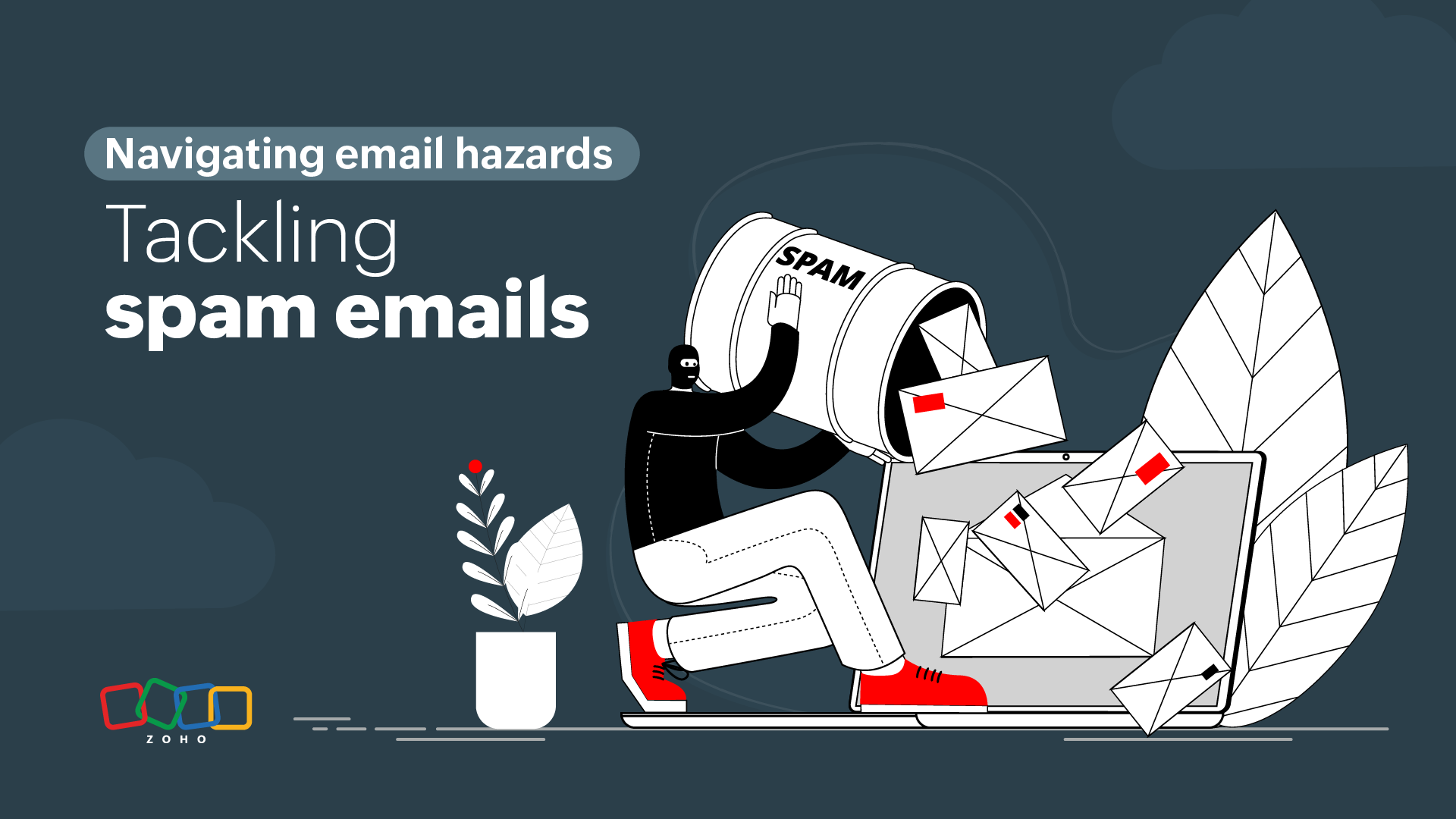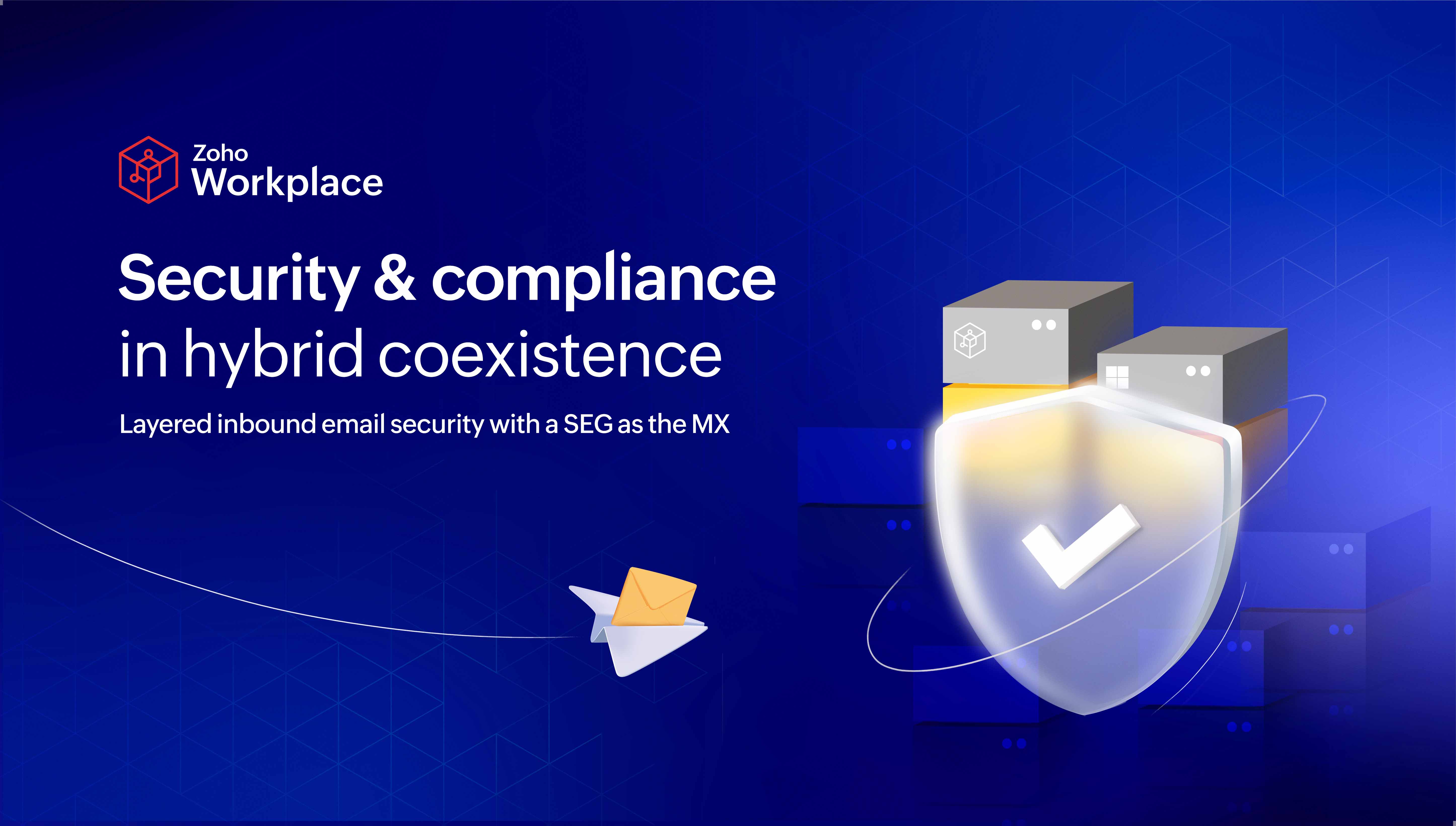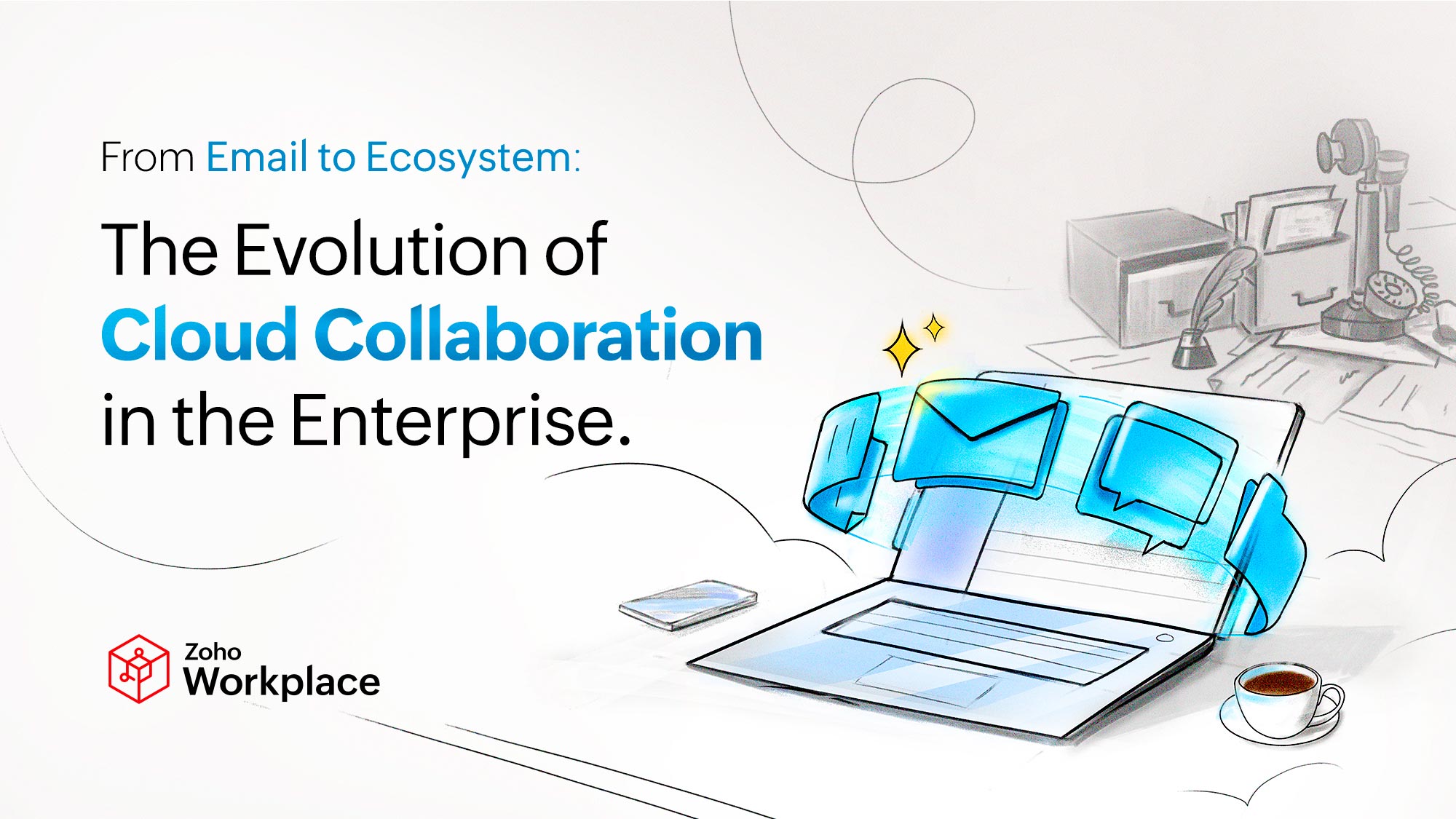- HOME
- All Products
- Navigating email hazards: Tackling spam emails - characteristics, impact, and prevention strategies
Navigating email hazards: Tackling spam emails - characteristics, impact, and prevention strategies
- Published : September 19, 2023
- Last Updated : September 16, 2025
- 1.4K Views
- 8 Min Read
Spam is an intrusive and unsolicited form of electronic communication, predominantly transmitted via email. It inundates inboxes with a deluge of irrelevant, deceptive, or malicious content, ranging from intrusive advertisements and fraudulent schemes to sophisticated phishing attempts.
By December 2022, spam emails made up more than 45% of e-mail traffic. Beyond being a nuisance, spam carries significant risks, exploiting recipients' trust by deceiving them into divulging sensitive information, proliferating malware infections, and causing financial harm.
Spam undermines productivity, strains network resources, and disrupts smooth communication within organizations. Notably, spam often serves as the starting point for various complex email security threats, highlighting the critical role of robust spam prevention measures as a fundamental defense for overall email security.

Characteristics
There are several key characteristics that represent the inherent traits of spam messages. Some of these include:
- Unsolicited: Spam messages sent without the recipient's request or consent.
- Bulk distribution: Spam that’s typically sent in large volumes, targeting a wide range of recipients simultaneously.
- Irrelevant content: Spam that often contains irrelevant or unrelated information to the recipient's interests or needs.
- Deceptive or misleading: Spam may use deceptive tactics, false information, or misleading subject lines to attract attention.
- Promotional in nature: Spam messages frequently promote products, services, or fraudulent schemes.
- Unsubscribe challenges: Spam messages often lack proper unsubscribe mechanisms or fail to honor opt-out requests.
- Unreliable senders: Spam is typically sent from untrustworthy or forged sender addresses, making it harder to trace or filter.
Impact assessment
According to Nucleus Research, the average loss per employee annually because of spam is approximately $1,934.
Spam emails are constantly flooding individuals’ inboxes every year, leading to a waste of time and energy in sorting through and deleting unwanted messages. Other negative impacts include security risks, reputational damage, and increased stress.
Spam, while a persistent nuisance and the cause of a significant volume of unwanted emails, may have a relatively lower direct impact compared to other email threats, such as phishing, malware, or targeted attacks. However, its indirect impact should not be overlooked.
Frequency of occurrence
According to research, spam accounts for 14.5 million messages globally per day. This makes up 45% of all emails.
Spam is a widespread and persistent problem in the email world, impacting organizations of all sizes and industries. It’s one of the most common and frequent email threats encountered daily.
- Volume: Organizations regularly receive a significant amount of spam, with estimates suggesting it makes up a majority of email traffic.
- Automation: Spammers use automated techniques and botnets to send spam messages to multiple email addresses simultaneously.
- Persistent campaigns: Spammers continuously adjust their tactics to evade filters and target recipients effectively.
Attack vectors
These attack vectors in spam aim to trick recipients into engaging in harmful activities.
- Malicious attachments: Attackers send emails with malicious file attachments, such as infected documents or executables. When opened or downloaded, the attachments execute malicious code on the recipient's system.
- Phishing links: Attackers send emails or messages containing deceptive links that appear legitimate but instead lead to fraudulent websites. The links are cleverly designed to trick recipients into providing sensitive information, such as login credentials or financial details.
- Deceptive URLs: Attackers create URLs that appear trustworthy but actually lead to fraudulent websites.
- Social engineering techniques: Attackers manipulate human psychology through social engineering tactics such as impersonation, building trust, creating a sense of urgency, or exploiting emotions to persuade victims to click on links, download attachments, or disclose sensitive information.
- Spoofed sender addresses: Attackers often forge or spoof email sender addresses to make the spam emails appear to come from legitimate sources or trusted contacts.
- Embedded scripts: Attackers use malicious scripts embedded within documents, webpages, or other files to exploit vulnerabilities in software or execute harmful actions.
Indicators of compromise
These indicators of compromise in spam can serve as warning signs of potentially malicious or fraudulent messages. Recognizing these indicators allows organizations to investigate further and take appropriate actions to prevent security breaches:
- Suspicious IP addresses
- Anomalous logins
- Unusual domain names
- Email addresses with random alphanumeric strings
- Misspelled or altered domain names
- Generic greetings or subject lines
- Excessive grammatical errors
- Requests for sensitive information
- URLs leading to suspicious or untrusted websites
Preventive measures
By implementing these preventive measures, organizations can significantly reduce spam, protect users, and maintain email security:
- Implement robust email filters to block spam messages using content filtering, blacklisting, whitelisting, and heuristic analysis.
- Use sender authentication protocols (e.g., SPF, DKIM, DMARC) to verify sender authenticity and prevent email spoofing.
- Educate users to identify and handle spam, avoid clicking on unknown links, and report spam emails.
- Enable anti-spam software on mail servers, desktops, and mobile devices, keeping it updated.
- Secure web forms with validation and CAPTCHA to prevent automated spam submissions.
- Monitor email traffic patterns and behavior to identify and block suspicious sources or sudden increases in spam activity.
Detection mechanisms
The Commonwealth Cyber Security Posture in 2022 report showed that email security, email encryption, and website encryption grew from February 2021 to May 2022.
Some common detection mechanisms for detecting spam include:
- Content filtering: Analyzing the content of emails to identify spam keywords, suspicious attachments, or malicious links.
- Blacklisting: Maintaining a list of known spam sources, IP addresses, or domain names and blocking incoming emails from those sources.
- Reputation-based systems: Assessing the reputation of email senders and domains to determine the likelihood of emails being spam.
- Real-time analysis: Analyzing emails in real time, comparing them against known spam patterns or behaviors.
- Machine learning: Using artificial intelligence algorithms to learn and adapt to new spam patterns and continuously improve detection accuracy.
Tools involved: Spam filters or email filters, email security gateways, spam firewalls and scanners, and email reputation systems are designed to analyze incoming email traffic, identify spam patterns, and take appropriate actions such as quarantining, blocking, or flagging suspicious emails.
Mitigation
These mitigation techniques enable organizations to proactively detect and respond to spam, minimizing its impact, protecting users, and maintaining a secure email environment.
- Incident response plan: Establishing a clear plan to respond to spam incidents, including escalation procedures, communication protocols, and recovery steps.
- User education and awareness: Conducting ongoing training to educate employees about spam risks, teaching them how to identify and handle suspicious emails, and encouraging the reporting of potential threats.
- Spam reporting and analysis: Implementing a system for users to report spam, enabling data gathering and analysis to identify trends, patterns, and sources for better prevention.
- Threat intelligence feeds: Subscribing to feeds that provide real-time information on known spam sources, tactics, and emerging threats to enhance detection capabilities.
- Security information and event management (SIEM) tools: Utilizing SIEM tools to centralize and analyze logs, enabling detection of suspicious activities and patterns related to spam.
- Email forensics tools: Employing tools for analyzing suspicious emails, tracing origins, and gathering evidence for investigation or legal purposes.
Reporting and incident response
These measures ensure efficient reporting of spam incidents, prompt response, containment, and remediation.
| Reporting and incident response for employees | Incident response for admins |
| If you receive an email that looks suspicious, avoid clicking on any links, downloading attachments, or responding to the email. Use the email client's spam or junk email reporting feature to flag the email as spam and forward the email to your IT department or security team. |
|
Regulatory compliance considerations
Regulatory compliance considerations for spam involve adhering to relevant regulations and standards established to combat spam attacks and protect individuals' privacy. All of these laws set the rules for commercial email messages and require accurate sender information, opt-out mechanisms, and honoring opt-out requests.
Some notable regulations and standards include:
- The CAN-SPAM Act (Controlling the Assault of Non-Solicited Pornography and Marketing), passed by the U.S. Congress and enforced by the Federal Trade Commission, sets and enforces regulations for sending commercial email in the United States.
- GDPR is a European Union regulation that aims to protect the personal data and privacy of its citizens.
- CASL is Canada's anti-spam legislation that regulates the sending of commercial electronic messages.
- The Australian Spam Act: Regulations against unsolicited messages without consent.
- The EU ePrivacy Directive: Rules on privacy and electronic communications, including spam.
Case studies
A few notable incidents involving spam include:
- COVID-19-related spam: During the COVID-19 pandemic, there was a surge in spam campaigns exploiting the global health crisis. Spam emails were used to distribute malware, promote fake treatments, offer fraudulent medical supplies, or attempt phishing attacks by impersonating health organizations or government agencies.
- 2018 FIFA World Cup scam: Before the start of the 2018 FIFA World Cup in Russia, fraudsters sent out spam emails, claiming that the victim won tickets to the World Cup through a lottery and prompted them to enter their personal information to claim the prize.
- Emotet botnet takedown: Emotet, a prominent botnet, gained infamy for its widespread spam and malware distribution activities. Operating as a sophisticated network, Emotet relied on spam emails as its primary attack vector. These emails were carefully crafted to entice recipients into opening malicious attachments or clicking on harmful links. Once engaged, the attachments or links would trigger the installation of malware on the victim's system, leading to potential data breaches, further malware propagation, and unauthorized access.
Conclusion
To strategically address the ever-present threat of spam emails, it’s imperative that we adopt targeted measures. Here are your clear takeaways:
1. Invest in advanced security technologies:
- Email filters: Employ content filtering, blacklisting, and heuristic analysis to weed out suspicious emails before they reach inboxes.
- Encryption and authentication protocols: Utilize SPF, DKIM, and DMARC to verify sender authenticity and prevent email spoofing.
- Real-time analysis and AI: Harness the analytic power of AI to adapt to new spam patterns to continuously improve detection accuracy.
2. Strengthen regulatory compliance:
- Compliance with anti-spam laws: Adhere to regulatory frameworks like CAN-SPAM, GDPR, and CASL to mitigate legal risks associated with spam emails.
- Data privacy measures: Ensure robust data privacy measures to protect sensitive information from being exploited through spam emails.
3. Foster education and awareness:
- Employee training: Conduct regular training sessions to help employees recognize and report spam emails effectively.
- Public awareness campaigns: Launch campaigns to inform the public about the latest spam threats and safe email practices.
4. Implement rigorous reporting and response mechanisms:
- Incident response plan: Develop a concrete plan outlining the steps to be taken in case of a spam attack, including escalation procedures and recovery steps.
- Spam reporting and analysis: Establish a system for spam reporting to gather data for trend analysis, aiding in better prevention strategies.
5. Leverage threat intelligence:
- Threat intelligence feeds: Subscribe to real-time information feeds to stay abreast of known spam sources and emerging threats.
- Collaboration with cybersecurity centers: Collaborate with cybersecurity centers globally to share information and strategies for spam prevention.
By executing these specific takeaways, individuals, and organizations can significantly bolster their defense against the relentless onslaught of spam emails, securing their data and digital assets for a safer online ecosystem.
This article is co-authored by Sandeep Kotla and Vignesh S.
Sandeep is an accomplished inbound marketer at Zoho Corporation, specializing in digital workplace strategies, digital transformation initiatives, and enhancing employee experiences. Previously, he handled analyst relations and corporate marketing for Manage Engine (a division of Zoho Corp) and its suite of IT management products. He currently spends most of his time re-imagining and writing about how work gets done in large organizations, reading numerous newsletters, and Marie Kondo-ing his inbox.
Vignesh works as a Marketing Analyst at Zoho Corporation, specializing in content initiatives and digital workplace strategies. He's a passionate creator with a penchant for marketing and growth. In his free time, you can see him shuffling between books, movies, music, sports, and traveling, not necessarily in the same order.


